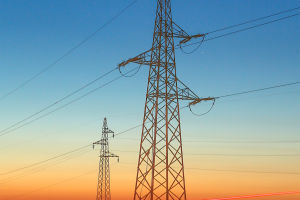Dependence on fossil fuels has trapped many countries in a cycle of rising costs, higher energy prices for consumers, increased pollution, and escalating greenhouse gas emissions.
Transitioning to renewable energy can break this cycle, offering lower electricity costs, enhanced resilience, and mitigation of climate change.
However, despite abundant solar and wind resources in many developing nations, renewable energy projects often fail to materialize. A structured approach can help governments escape fossil fuel dependency and foster a virtuous cycle for clean energy.
Renewable Energy 101 | National Geographic
Video by National Geographic
Steps to Create a Virtuous Cycle for Clean Energy
Step 1: Government Commitment
Governments must establish clear targets and strategies for long-term decarbonization and energy transition. This foundational step demonstrates a commitment to clean energy and provides direction for further actions.
Step 2: Supportive Policies and Regulations
Effective policies and regulations are essential to signal markets and encourage private investments. Measures include streamlined licensing procedures, incentives for private operators, and investment plans for necessary infrastructure.
Step 3: Institutional Strengthening
Strong institutions, including ministries, regulators, and energy utilities, are crucial. They help develop quality sector plans, navigate investor risks, and improve transmission and distribution systems.
Step 4: Creating a Project Pipeline
Developing bankable clean energy projects attracts investors. Initiatives like renewable energy installations for public facilities and larger-scale projects with well-chosen locations can generate interest from major investors.
Step 5: Competitive Procurement Processes
Transparent and predictable procurement processes ensure fair risk allocation and attract private investments. Competitive methods drive down energy service costs while delivering affordable prices for consumers.
Step 6: Results and Momentum
Dear Lykkers! Affordable power strengthens public resolve, boosts consumer interest, and increases private sector involvement. Each success builds momentum, overcoming obstacles in subsequent cycles and accelerating the energy transition.
Addressing Financial Barriers
Affordable Financing
Scaling up clean energy requires affordable financing, particularly in low- and middle-income countries. Funding from development banks and multilateral institutions can help countries overcome initial barriers by supporting policy development, institutional strengthening, and project preparation.
Balancing Immediate and Long-Term Needs
Many countries face the challenge of meeting growing electricity demands while managing limited resources. Fossil fuel-based options often appear more feasible due to lower up-front costs. However, affordable clean energy and international support can gradually reduce dependence on inefficient subsidies and pave the way for sustainable solutions.
Success Stories: The Power of the Virtuous Cycle
In 2016, India committed to generating 40% of its electricity from non-fossil-fuel sources by 2030. The government improved its regulatory and fiscal environment and implemented a Solar Parks policy to facilitate private investment. The Rewa Solar Park, backed by $18 million from the World Bank, catalyzed $575 million in private investment, achieving tariffs as low as 4.4 US cents per kilowatt hour—cheaper than coal-fired plants.
Scaling up sustainable energy demands urgency. By accelerating the virtuous cycle of renewable energy, countries can transition to low-cost, clean energy sources that meet growing demands while safeguarding the planet. With coordinated global efforts, a thriving future powered by renewable energy is within reach.


